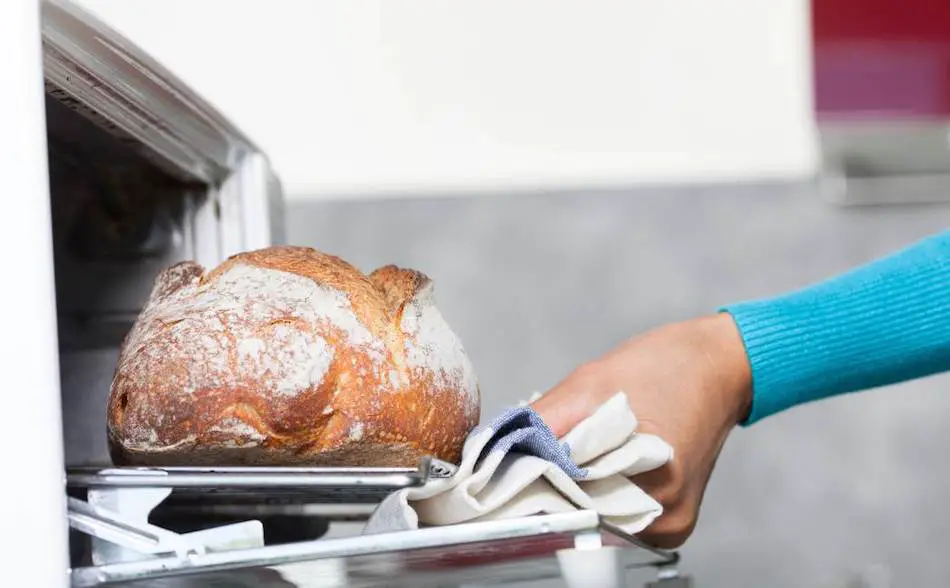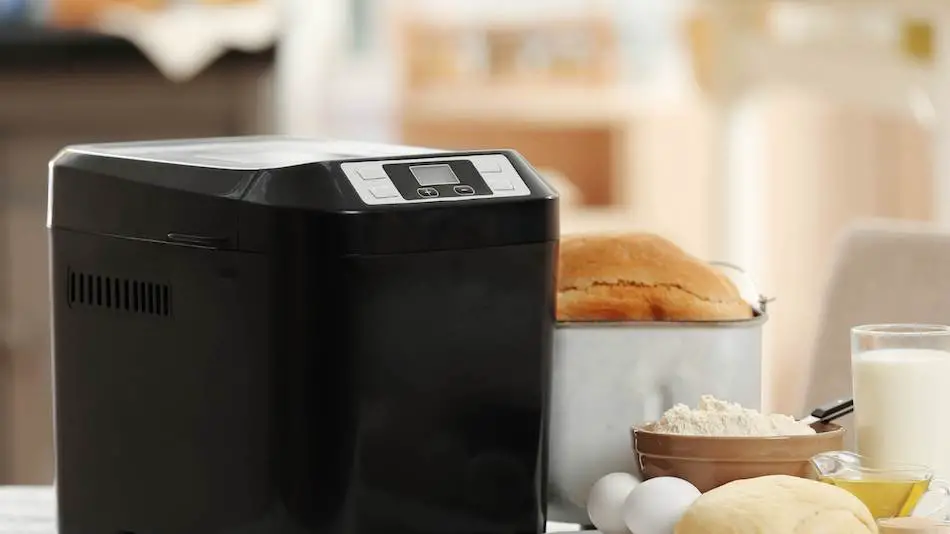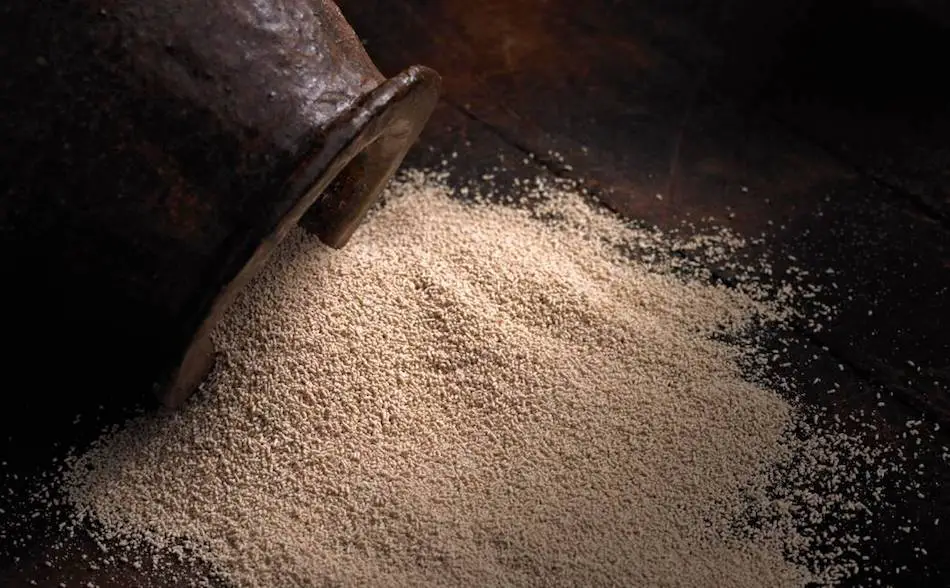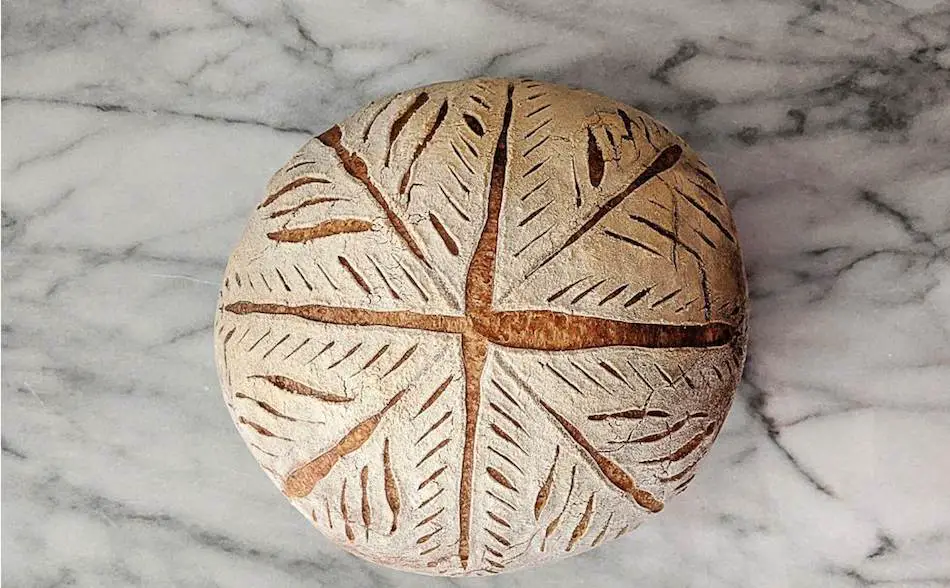No doubt you’re probably familiar with the two most popular methods of baking sourdough loaves – the bread machine and the oven. But which one is the best for achieving that perfect, crispy crust and soft, pillowy center? In this article, we’ve gathered expert tips and insider secrets to bring you an in-depth comparison of these two popular methods of baking sourdough. From the impact of temperature and humidity, to the role of yeast and other leavening agents, we’ve got everything you need to know to make the best sourdough loaf.
The difference between sourdough bread baked in a bread machine versus baked in an oven lies in the control and environment of the baking process. A bread machine offers convenience and ease with its programmed settings, but may not provide the same level of control over temperature and humidity as an oven. On the other hand, baking sourdough in an oven allows for more control over the baking environment, but requires more effort and hands-on attention. The end result may vary between the two methods, with the oven potentially producing a more traditional, crusty sourdough loaf, while the bread machine may result in a softer, more evenly baked loaf. Ultimately, the choice between the two methods will depend on personal preference and the desired outcome for the finished sourdough bread.
| Method | Pros | Cons |
|---|---|---|
| Bread Machine | Consistent temperature and humidity control, Convenient and hands-off, No need to constantly monitor the bake, Ideal for beginner bakers | Limited control over temperature and humidity, Can result in a softer crust, Limited creativity in the baking process, May not produce the same flavor as oven-baked sourdough |
| Oven | More control over temperature and humidity, Crustier texture and more complex flavor, More creativity in the baking process, Ideal for experienced bakers | More hands-on and time-consuming, Requires constant monitoring, Can be more challenging for beginner bakers, Requires a reliable oven |
Introduction to Sourdough Baking
Sourdough is a type of bread that is made using a naturally occurring mixture of yeast and bacteria, known as a sourdough starter. This type of bread has been made for centuries, and its popularity has only increased in recent years as people seek out healthier and more artisanal food options.
Sourdough baking is a unique and rewarding experience that requires patience, precision, and a little bit of scientific know-how. The process starts with creating a sourdough starter, which is then used as the leavening agent in the dough. The dough is then fermented, shaped, and baked to create a delicious, crusty loaf of bread with a tangy flavor and a chewy texture.
Whether you’re a seasoned baker or just starting out, sourdough baking is a great way to learn more about the science behind baking and to create delicious, healthy bread right in your own kitchen. So, if you’re ready to dive into the world of sourdough baking, let’s get started!
| Factor | Bread Machine | Oven |
|---|---|---|
| Convenience | High | Low |
| Control over temperature and humidity | Low | High |
| Hands-on time | Low | High |
| Ideal for beginner bakers | Yes | No |
| Ideal for experienced bakers | No | Yes |
| Resulting texture | Soft crust | Crispy crust |
| Flavor complexity | Low | High |
| Creativity in the baking process | Low | High |
The Basics of Bread Machines
Bread machines are automated appliances that simplify the process of making bread by handling all the kneading, rising, and baking steps. These machines are equipped with a mixing bowl, a bread pan, and a baking chamber. They also have a control panel that allows you to select the type of bread you want to make, as well as the crust color, loaf size, and other options.
Bread machines come in a variety of sizes, styles, and features, but they all work on the same basic principle: you add the ingredients to the machine, select the desired settings, and let the machine do the rest. The machine will mix the ingredients, knead the dough, let it rise, shape the loaf, and bake the bread to perfection.
Bread machines are a great option for busy people who don’t have a lot of time to spend baking bread from scratch. They’re also ideal for novice bakers who are just starting out and want to learn the basics of bread making without having to do all the work by hand.
| Mistake | Explanation |
|---|---|
| Over-kneading the dough | Over-kneading can lead to a dense and heavy final product, as it can cause the gluten structure to break down. |
| Not allowing enough time for fermentation | Fermentation is crucial for developing the flavor and structure of sourdough bread. Not allowing enough time for fermentation can result in a less flavorful and less risen final product. |
| Not using the correct type of flour | Different flours have different levels of protein, which affects the final texture and flavor of the bread. Make sure to use a high-protein flour, such as bread flour, for best results. |
| Not using the correct type of yeast | Different types of yeast have different rising times and flavor profiles, so make sure to choose the right yeast for your desired outcome. |
| Not paying attention to temperature and humidity | Temperature and humidity can have a significant impact on the final outcome of your sourdough bread, so make sure to monitor them carefully and adjust as needed. |
The Pros and Cons of Bread Machines for Sourdough Baking
Bread machines can be a great tool for baking sourdough bread, but like any baking method, they have their pros and cons.
Pros:
- Convenience: Bread machines are incredibly easy to use. Simply add the ingredients, select the desired settings, and the machine will handle the rest.
- Consistent Results: Bread machines are designed to produce consistent results every time, which can be particularly helpful when baking sourdough bread, which can be somewhat finicky.
- Time-saving: Bread machines save time by handling the mixing, kneading, and rising processes, freeing up the baker to focus on other tasks.
Cons:
- Limited Control: Bread machines can be limiting in terms of the level of control you have over the baking process. For example, you can’t easily adjust the temperature or humidity of the baking environment.
- Reduced Flexibility: Bread machines are designed to work with specific recipes, which can be limiting for more experienced bakers who may want to experiment with different ingredients and techniques.
- Quality: While bread machines can produce good-quality bread, they may not match the results that can be achieved through traditional baking methods.
The Advantages of Baking Sourdough in the Oven
Baking sourdough bread in the oven offers several advantages over using a bread machine or other methods of baking. Here are some of the key benefits:
- More Control: Baking sourdough in the oven gives you complete control over the baking environment, allowing you to adjust temperature, humidity, and other factors to achieve the perfect results.
- Better Texture and Flavor: Oven-baking sourdough bread can result in a better texture and flavor compared to bread made in a machine. This is because the oven provides a more controlled and consistent heat, resulting in a crispier crust and a more complex flavor.
- Customization: Baking sourdough in the oven allows you to make changes to the recipe and ingredients, giving you the freedom to experiment and create unique and personalized loaves of bread.
- Cost-effective: Baking sourdough in the oven is often more cost-effective than using a bread machine, as you don’t need to purchase any specialized equipment.
- Improved Baking Skills: Baking sourdough in the oven can be a great way to improve your baking skills and learn more about the science and art of baking.

The Differences in the Baking Process for Sourdough in Bread Machines vs Oven
The baking process for sourdough bread can differ greatly depending on whether you’re using a bread machine or an oven. Here are some of the key differences to consider:
Bread Machine:
- Mixing: In a bread machine, the ingredients are mixed together in the machine’s bowl.
- Kneading: The machine handles the kneading process, which helps to develop the gluten in the dough.
- Rising: The machine also controls the rising process, ensuring that the dough rises to the correct size and consistency.
- Baking: Once the rising process is complete, the machine will automatically start baking the bread.
Oven:
- Mixing: When baking sourdough in the oven, the ingredients are mixed together by hand or with a stand mixer.
- Kneading: The dough must be kneaded by hand or with a stand mixer, which can be time-consuming but also provides an opportunity to develop your baking skills.
- Rising: The dough must be placed in a warm, moist environment to rise, which can be a bit trickier than using a bread machine.
- Baking: Once the dough has risen, it is placed in the oven to bake.
The Impact of Temperature and Humidity on Sourdough Baking
Temperature and humidity play a critical role in the baking process of sourdough bread, affecting the final product in many ways. Understanding these factors and how to control them is key to producing consistently good results.
Temperature:
- Dough Temperature: The temperature of the dough affects the rate of fermentation, which in turn affects the flavor, aroma, and texture of the bread. A temperature of around 78°F is ideal for sourdough fermentation.
- Oven Temperature: The temperature of the oven also affects the final result of the bread. A hot oven is best for sourdough bread, as it provides a crisp crust and a well-risen loaf.
Humidity:
- Dough Humidity: The humidity of the dough affects the texture and rise of the bread. High humidity will help the dough rise, while low humidity will result in a denser loaf.
- Oven Humidity: The humidity of the oven also affects the final result of the bread. A humid oven helps create a crustier loaf, while a dry oven results in a drier, less crusty loaf.
Factors to Consider When Choosing a Method for Sourdough Baking
When deciding between baking sourdough bread in a bread machine or in the oven, there are several factors to consider to help you choose the best method for your needs.
- Convenience: Bread machines are incredibly convenient and make it easy to produce consistently good results. On the other hand, baking sourdough in the oven requires more hands-on involvement but can be a more rewarding experience for those who enjoy the baking process.
- Time: Baking sourdough in a bread machine is generally faster than baking it in the oven, as the machine handles the mixing, kneading, and rising processes. Baking sourdough in the oven can take longer, but it allows for more control over the process.
- Skill Level: Bread machines are ideal for those with less experience in baking, as they handle the complex processes of mixing, kneading, and rising. Baking sourdough in the oven is better suited for experienced bakers who want to develop their skills.
- Final Product: The final product can differ between baking sourdough in a bread machine versus the oven. Bread machines produce a consistent loaf, while baking in the oven can produce a more unique, artisan-style bread.
- Cost: Bread machines can be expensive to purchase, but they can save time and effort in the long run. Baking sourdough in the oven requires less initial investment, but can take longer and requires more hands-on involvement.
Tips for Successful Sourdough Baking in Bread Machines
For those who choose to bake sourdough bread in a bread machine, here are some tips to help you achieve consistent, successful results:
- Use a recipe specifically designed for a bread machine: Using a recipe designed for a bread machine will help ensure the best possible results.
- Use the correct ingredients: Make sure you are using ingredients specifically designed for sourdough bread, such as bread flour and active sourdough starter.
- Use the correct pan size: Make sure to use the correct pan size for your bread machine, as different machines have different pan sizes.
- Add ingredients in the correct order: Make sure to follow the instructions for adding ingredients to your bread machine, as the order in which ingredients are added can affect the final result.
- Experiment with different cycles: Most bread machines have different cycles for different types of bread, such as a sourdough cycle. Experiment with different cycles to find the best option for sourdough bread.
- Keep an eye on the dough: While the bread machine handles the mixing and kneading, it is still important to keep an eye on the dough to ensure it is not too sticky or too dry.
- Experiment with different temperatures: Different bread machines have different temperatures for their sourdough cycles, so experiment to find the best temperature for your machine.

Tricks for Perfecting Sourdough Baking in the Oven
For those who choose to bake sourdough bread in a bread machine, here are some tips to help you achieve consistent, successful results:
- Use a recipe specifically designed for a bread machine: Using a recipe designed for a bread machine will help ensure the best possible results.
- Use the correct ingredients: Make sure you are using ingredients specifically designed for sourdough bread, such as bread flour and active sourdough starter.
- Use the correct pan size: Make sure to use the correct pan size for your bread machine, as different machines have different pan sizes.
- Add ingredients in the correct order: Make sure to follow the instructions for adding ingredients to your bread machine, as the order in which ingredients are added can affect the final result.
- Experiment with different cycles: Most bread machines have different cycles for different types of bread, such as a sourdough cycle. Experiment with different cycles to find the best option for sourdough bread.
- Keep an eye on the dough: While the bread machine handles the mixing and kneading, it is still important to keep an eye on the dough to ensure it is not too sticky or too dry.
- Experiment with different temperatures: Different bread machines have different temperatures for their sourdough cycles, so experiment to find the best temperature for your machine.
The Importance of Proper Fermentation in Sourdough Baking
Fermentation is an essential step in the sourdough baking process, as it helps to develop the flavor and texture of the bread. Proper fermentation is crucial for achieving the characteristic tangy flavor and light, airy texture of sourdough bread.
Here are some tips for ensuring proper fermentation when baking sourdough:
- Use a mature sourdough starter: A mature sourdough starter is an essential ingredient for achieving proper fermentation. Make sure your starter is active and ready to use before beginning the baking process.
- Maintain proper temperature: Maintaining the correct temperature during fermentation is important for achieving the best results. Generally, a temperature of around 75°F is ideal for sourdough fermentation.
- Keep the dough covered: Covering the dough during fermentation will help to maintain the right environment for the yeast and bacteria to grow.
- Avoid over-fermentation: Over-fermentation can cause the dough to become too acidic, affecting the flavor and texture of the bread. Keep an eye on the dough and stop the fermentation process at the right time.
- Experiment with different fermentation times: Different recipes may call for different fermentation times, so experiment to find the best option for your sourdough recipe.
The Role of Yeast and Other Leavening Agents in Sourdough Baking
Yeast and other leavening agents play a crucial role in the sourdough baking process, as they help the dough to rise and achieve the light, airy texture that sourdough bread is known for.
In sourdough baking, yeast is naturally present in the sourdough starter, which is made from a mixture of flour and water that has been fermented with yeast and lactic acid bacteria. The yeast in the starter ferments the sugars in the dough, producing carbon dioxide and causing the dough to rise.
Other leavening agents, such as baking powder and baking soda, can also be used in sourdough baking. Baking powder and baking soda are chemical leavening agents that release carbon dioxide when exposed to moisture and heat, causing the dough to rise.
It is important to use the right amount of yeast and other leavening agents in your sourdough recipe, as too much or too little can affect the flavor and texture of the bread. Experimenting with different quantities and ratios will help you find the best option for your recipe.

Common Mistakes to Avoid When Baking Sourdough
Baking sourdough can be a rewarding experience, but it can also be challenging, especially for those new to the process. Here are some common mistakes to avoid when baking sourdough:
- Improper mixing: Overmixing or undermixing the dough can affect the structure and texture of the bread. It’s important to mix the dough just enough to bring the ingredients together, but not so much that the gluten structure is damaged.
- Incorrect fermentation time: Fermentation time is crucial in sourdough baking, as it affects the flavor and texture of the bread. Make sure to follow your recipe’s instructions for the recommended fermentation time, and keep an eye on the dough so that it doesn’t over-ferment.
- Ignoring the importance of proper temperature: Proper temperature is important for successful sourdough baking, both during the fermentation process and when baking the bread. Make sure to maintain the correct temperature for the best results.
- Not shaping the dough correctly: Proper shaping of the dough is important for the final appearance and texture of the bread. Make sure to shape the dough correctly and give it enough time to rest before baking.
- Over-proofing the dough: Over-proofing the dough can cause it to become too acidic, affecting the flavor and texture of the bread. Make sure to monitor the dough during the proofing stage and stop the process when the dough is ready.
- Using too much flour: Using too much flour can make the bread dense and heavy. Make sure to use just enough flour to handle the dough, and avoid adding too much when shaping and baking the bread.
The Benefits of Homemade Sourdough Over Store-Bought Bread
Homemade sourdough bread offers a variety of benefits over store-bought bread. Here are some of the main benefits of making your own sourdough:
- Healthier: Homemade sourdough is made with simple, wholesome ingredients, such as flour, water, salt, and yeast. It doesn’t contain any preservatives, artificial colors, or chemicals, making it a healthier option than store-bought bread.
- Better digestion: Sourdough bread is made through a natural fermentation process, which can make it easier for some people to digest. The long fermentation time breaks down the gluten and other complex carbohydrates, making it easier for the body to process.
- More flavorful: Homemade sourdough has a tangy, complex flavor that is hard to find in store-bought bread. This flavor comes from the natural yeast and bacteria present in the sourdough starter.
- Environmentally friendly: Making your own sourdough at home reduces your carbon footprint, as you’re not buying packaged bread that requires energy to transport. Plus, you can use a sourdough starter to make multiple loaves of bread, reducing the amount of waste you produce.
- Cost-effective: Homemade sourdough can be more cost-effective in the long run, as you only need to buy a few basic ingredients to make multiple loaves of bread.
- Satisfying: There’s a certain satisfaction that comes with making your own sourdough bread. It’s a rewarding experience to see your hard work pay off in the form of a delicious, crusty loaf of bread.

Frequently Asked Questions About Sourdough Baking in Bread Machines vs Oven
- What’s the difference between sourdough baked in a bread machine and in an oven? The main difference between sourdough baked in a bread machine and in an oven is the control over temperature and humidity. Bread machines are designed to maintain a consistent temperature and humidity, which can make it easier to achieve a consistent rise and bake. On the other hand, baking sourdough in an oven offers more control over the temperature and humidity, allowing for more flexibility in the baking process.
- Which method is better for sourdough baking, bread machine or oven? It’s difficult to say which method is better for sourdough baking, as both have their pros and cons. Bread machines are convenient and make it easier to achieve consistent results, while baking in the oven offers more control over the process and allows for more creativity. The best method for you will depend on your personal preferences, the resources you have available, and the results you’re looking to achieve.
- Is sourdough baked in a bread machine as good as oven-baked sourdough? It’s possible to make delicious sourdough in a bread machine, but it may not be exactly the same as oven-baked sourdough. Some bakers prefer the crusty texture and complex flavor of oven-baked sourdough, while others appreciate the convenience of a bread machine. It’s all a matter of personal preference.
- Can I use a bread machine to make sourdough starter? Yes, you can use a bread machine to make a sourdough starter. Some bread machines have a “dough” setting, which allows you to mix and ferment the starter in the same machine. However, it’s important to remember that sourdough starter is a living culture, and it may take some time to get it to thrive in your bread machine.
- What are the most important factors to consider when choosing a method for sourdough baking? The most important factors to consider when choosing a method for sourdough baking are temperature and humidity control, convenience, and the desired final result. It’s also important to consider the resources you have available, such as a bread machine or a reliable oven, as well as your personal preferences and baking experience.
- Can I bake sourdough in a bread machine and then finish it in the oven for a crusty texture? Yes, you can bake sourdough in a bread machine and then finish it in the oven for a crustier texture. This is a popular technique among sourdough bakers and allows you to take advantage of the convenience and temperature control of a bread machine, while also getting the crusty texture and flavor of oven-baked sourdough.

